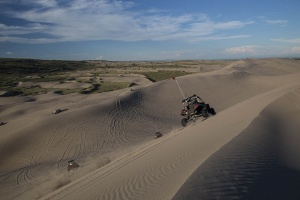BLM’s Egin Lakes Campground to remain open until Oct. 10
Organization:
BLM Office:
Media Contact:
IDAHO FALLS, Idaho— To meet the needs of ATV enthusiasts over Columbus Day weekend, the Bureau of Land Management has decided to keep the Egin Lakes campground open until Oct. 10. The area will be staffed during regular business hours.
“We are happy to provide this service to our public,” said Jeremy Casterson, BLM Upper Snake Field Office Manager. The Egin Lakes recreation site will seasonally close to overnight camping effective Oct. 10 through approximately May 1, depending on weather. The site will remain open to day use throughout the winter.
The BLM closes the campground seasonally because visitation significantly decreases as the weather gets colder. The water system is shut down and winterized to prevent broken pipes due to freezing. A closure to protect elk, moose and deer wintering areas is also in place from Jan. 1 through April 1 in the larger area surrounding the campground and the dunes. The campground reopens in May as the weather warms up and visitation increases.
The white quartz sand dunes are the largest in Idaho and blanket an area approximately 35 miles long and five miles wide. This unique area sees over 250,000 visitors a year from around the world. Not only does it create an amazing outdoor playground, it is an important environment for a variety of plants and animals, providing critical winter range for elk, mule deer and moose.
For more information, please contact Ben Cisna, outdoor recreation planner, at [email protected] or 208-524-7557. Please visit the BLM’s website at https://www.blm.gov/visit/egin-lakes-campground-day-use-area for more information.

The BLM manages about 245 million acres of public land located primarily in 12 western states, including Alaska, on behalf of the American people. The BLM also administers 700 million acres of sub-surface mineral estate throughout the nation. Our mission is to sustain the health, diversity, and productivity of America’s public lands for the use and enjoyment of present and future generations.
